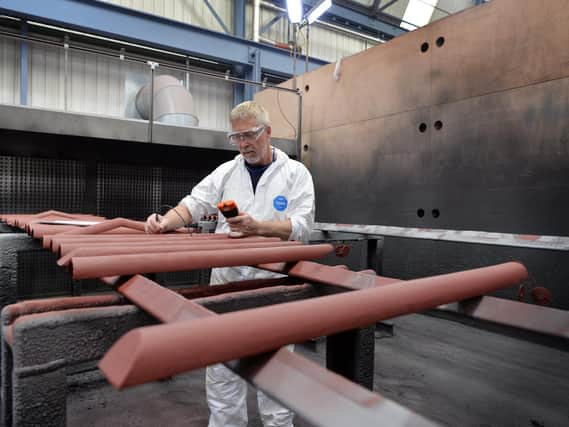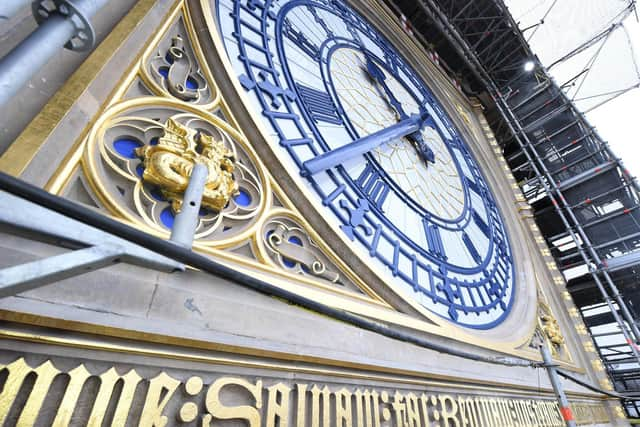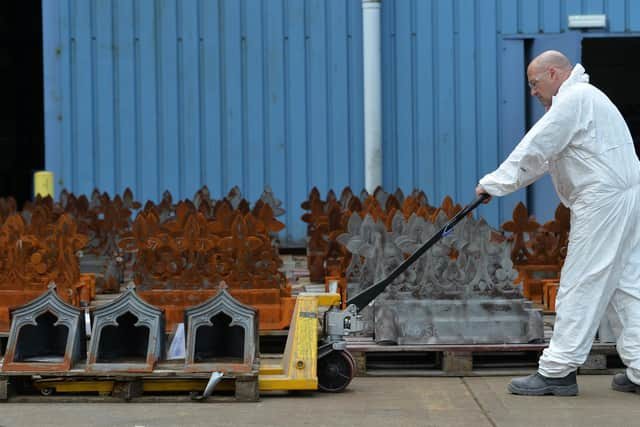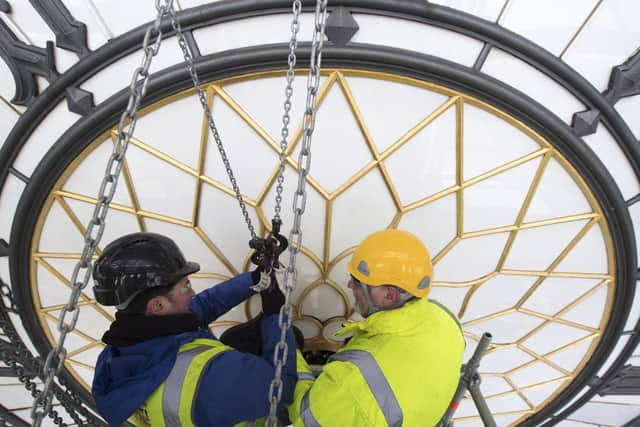Yorkshire firms 'immensely proud' to work on Elizabeth Tower conservation project, as Doncaster stone used to restore Big Ben clock tower


When the Palace of Westminster was rebuilt following a devastating fire on October 16, 1834, that destroyed both the House of Commons and the House of Lords, it was limestone sourced more than 200 miles away in South Yorkshire that was picked for the huge construction project.
The limestone from the Anston Quarry was chosen because it was cheaper, it could be carved more elaborately and was close to the Chesterfield canal – ideal for transport to London.
Advertisement
Hide AdAdvertisement
Hide AdAnd now more than 160 years later, Yorkshire is once at the forefront of a huge restoration scheme that is being undertaken in Westminster.


The Elizabeth Tower conservation project is due to be completed next year, when the world-famous chimes of Big Ben will once again be heard.
Yorkshire was once again chosen as the best part of the world to source stone for the project.
In 2017, stone was hewn from the Cadeby Quarry in Doncaster – a limestone famed for its durability and hardiness.
Advertisement
Hide AdAdvertisement
Hide AdAnd companies from the region have been involved in the bid to restore the Elizabeth Tower and the famous clock, which are undergoing the most extensive works for more than 32 years.


Hargreaves Foundry, which is based in Halifax, has been casting iron for mouldings, gutters and roof tiles during the restoration.
The company’s ‘HF’ stamp can be seen on the metalwork of the Elizabeth Tower, ensuring that Yorkshire’s presence in the building is felt for many years to come.
Michael Hinchliffe, the managing director of Hargreaves Foundry, said: "This is an immensely prestigious project involving some of the best architects, engineers, historians, archivists and manufacturers in the country.
Advertisement
Hide AdAdvertisement
Hide Ad“We are immensely proud to be involved, especially given Halifax’s close association with Charles Barry, the original architect whose last major commission was Halifax Town Hall."


At the top of the tower sits the Ayrton Light, a lantern-like structure installed in 1885 which shines whenever either the Lords or the Commons sits after dark.
Whilst the electricity supply to the Ayrton Light has been switched off since 2018 and connected to four temporary lights, the historic structure now awaits its new energy-efficient electrical light fittings - with the ironwork, casing and access areas now complete.
The work was carried out by specialists from Shepley Engineers, a company whose Sheffield workshop played an essential role in restoring the historical structure.
Advertisement
Hide AdAdvertisement
Hide AdTeams had to remove each piece of the Ayrton Light from the top of the Elizabeth Tower, dismantling and restoring all elements from the large iron panels to the smallest nuts and bolts.
Individual pieces were then transported to Sheffield, where conservators had to mark and catalogue the structure prior to grit blasting and full reconstruction.
A series of talks have been staged in Parliament for contractors to outline the work they have been undertaking on restoring the historic Elizabeth Tower.
Representatives from Shepley Engineers gave their own presentation in June while Mr Hinchliffe gave a talk on Wednesday to highlight the work of the Hargreaves Foundry.
Now that the restoration project is back to working at full capacity due to being affected by the coronavirus pandemic, it is expected to be finished during the spring of next year.